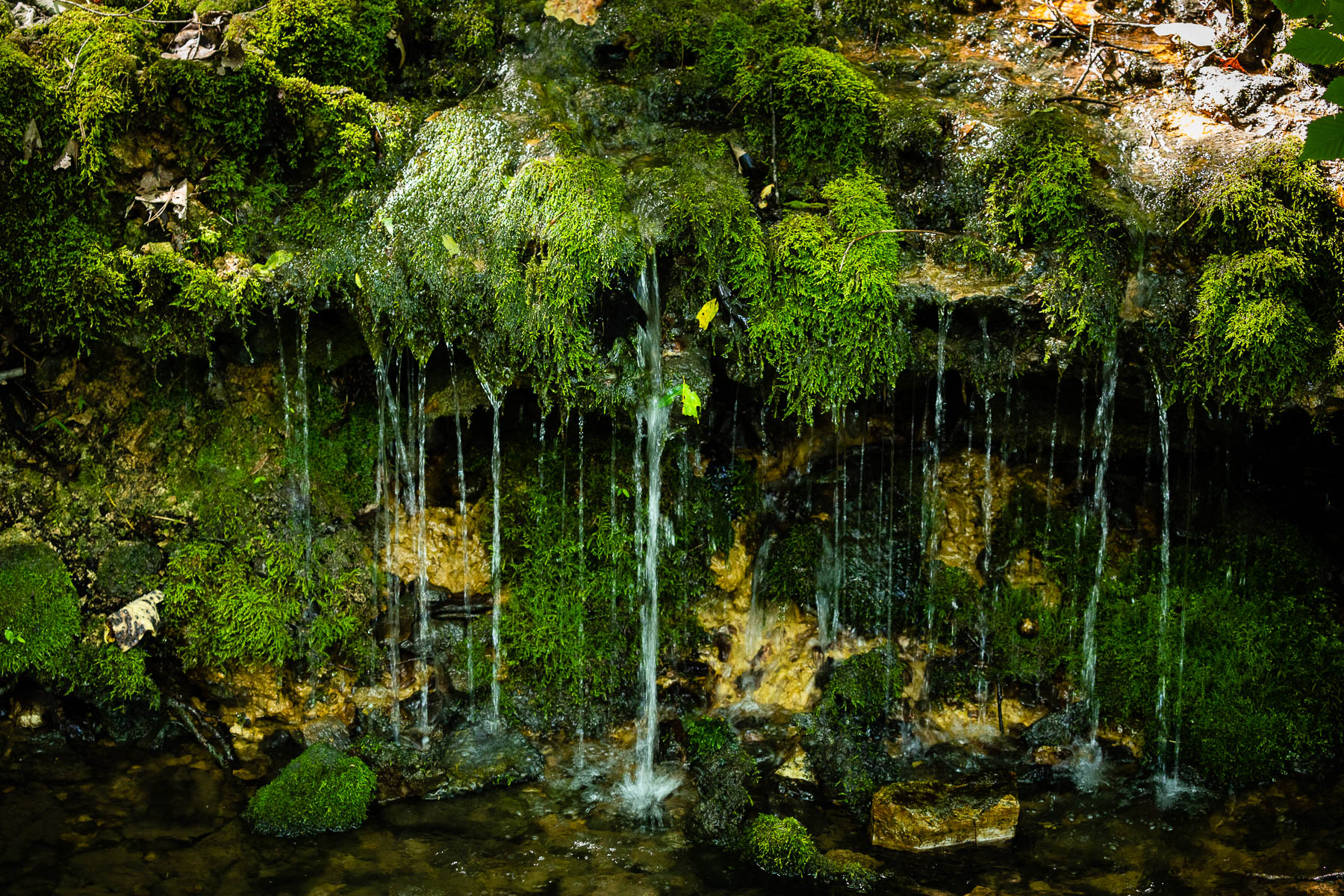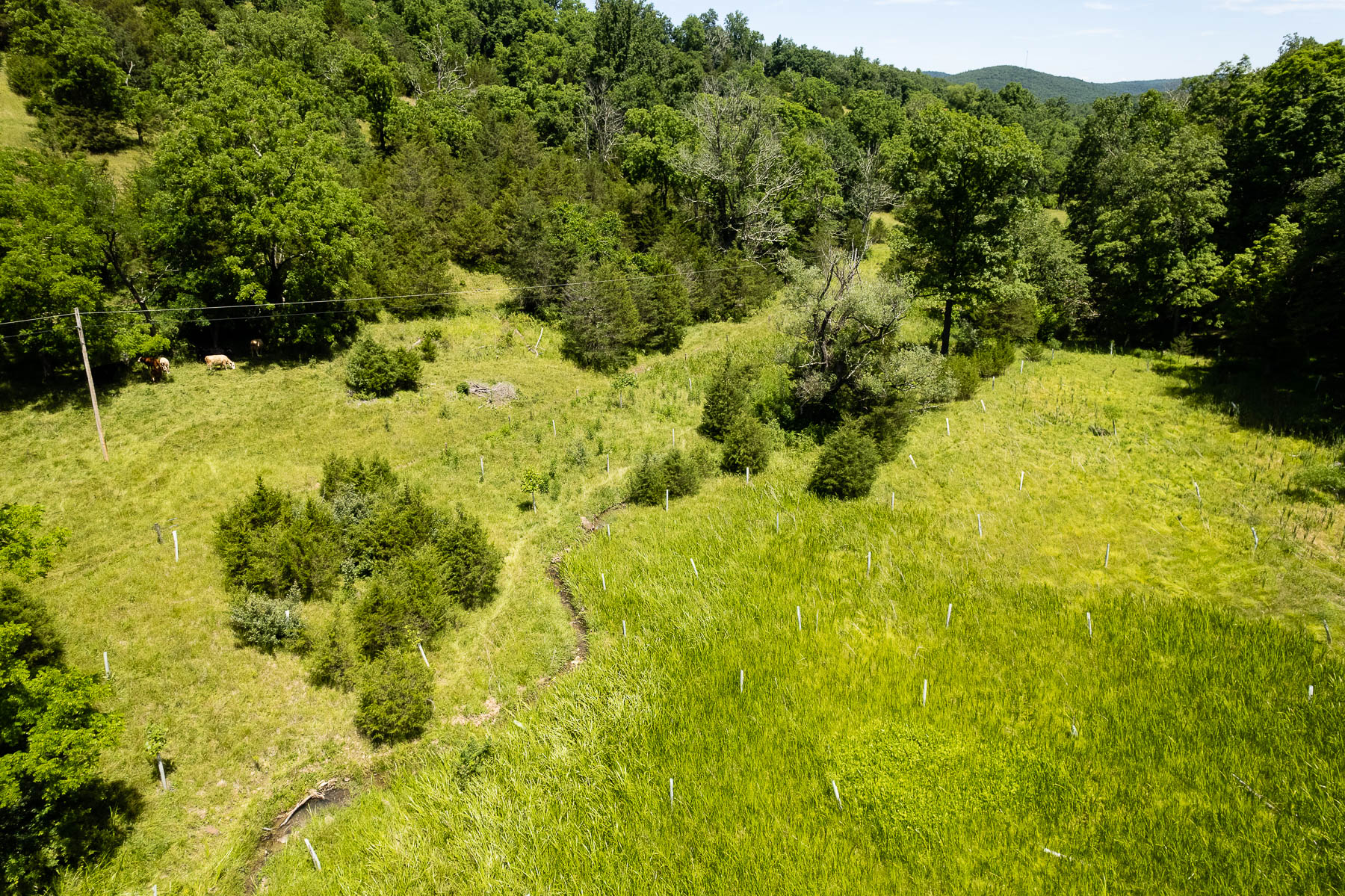West Virginia landowner collaborates with nonprofit to restore brook trout habitat

Cold, clear water flows from a hillside in Baker, West Virginia, feeding a creek that has been running through Greg Hulver’s property for generations. The land lies in a hollow of a forested area that eventually drains into the Potomac River—a main tributary of the Chesapeake Bay.
The connection Hulver’s land has to the Chesapeake Bay is one he said he had never thought about before taking steps to restore the creek when he noticed a declining brook trout population.
“As a kid I could catch brook trout in 30 minutes and then as I grew older I could go half a day without catching anything and it just kept getting worse,” Hulver said.
Brook trout are the only native trout species in the Chesapeake Bay watershed and require cold and clean water to survive. Hulver said his son loves to fly fish, so protecting the creek is a way to preserve the natural resource for generations to come.

In 2016, Hulver started researching to see what could be done to help bring back the brook trout population. In his research, Hulver found Trout Unlimited (TU), a national nonprofit dedicated to restoring rivers and streams to help native trout and salmon populations thrive, and has been working with them since 2016 to restore his property.
Hulver and TU used federal funding from the most recent Farm Bill and the U.S. Department of Agriculture’s Natural Resources Conservation Service, as well as grant funding from the Chesapeake Bay Program’s Small Watershed Grant program among others to install fencing, plant trees and restore the streambank.
Millions of dollars are available for restoration on private and public property through grants like these. The National Fish and Wildlife Foundation, who administers the Small Watershed Grants on behalf of the Bay Program, estimates that the program will award between $15 to $25 million dollars to projects within the Chesapeake Bay watershed in 2022.

Ryan Cooper, TU conservation planner for the Potomac Valley region of West Virginia, said securing grants to fund restoration projects is crucial to reduce the burden of cost to landowners on complex projects. In addition, TU provides both technical and implementation support for the projects through the grants.
“Federal funding normally covers roughly 75% of costs,” Cooper said. “Augmentation funding is important because otherwise … it would be too expensive for [landowners] to do these projects on their own.
This area in West Virginia’s Eastern Panhandle is a part of the Cacapon River watershed which covers 178 square miles of land. Hulver's property and story has been instrumental in convincing nearby landowners to restore their land to help keep the watershed healthy.
Cooper said one of the most important things to continue restoration efforts in the area is by simply talking to people and showing them resources they often do not know are available.
Cooper works one-on-one with landowners to assess their property needs and combine those with the restoration goals of TU. Cooper said having a partnership is important because TU works to secure funding, apply for the right permitting and fill out the appropriate paperwork that a general individual would most likely not be aware of or know how to do. They specialize in restoration projects and can follow all of the regulations for restoring property that federal funding and grants require.

On Hulver’s property, hundreds of trees were planted in the focus area of a 21.9-acre stretch. The creek itself was restored by using local logs and stones to strengthen the streambank, creating plunge pools and shaded habitat for the brook trout to live.
Sycamore, poplar, redbud, maple and willow trees were all planted and plastic tubes cover the young tree trunks to protect them from deer as they grow. Sycamore and willow trees were specifically planted near the creek to stabilize its banks. The broad leaves of sycamore trees are also able to shade the water to keep it cool during the hot, summer months, making it even more suitable for fish like brook trout.
Roughly 30 cattle owned by Hulver’s neighbor used to graze freely on his property, but one of the restoration efforts was to fence off areas to keep the cattle out of the water. Thirteen hundred feet of streamside fencing was put in place and two cattle troughs were installed to provide the cattle water.
“Keeping the cattle out makes such a big difference to improving the water quality,” said Curtis Roth, coordinator of the TU’s Potomac Headwaters Home Rivers Initiative.
Streambanks can deteriorate and erode when cattle drink straight from the creek and trample the banks, which releases sediment into the water. Their waste can also run into the creek and add harmful levels of nutrients into the water.
For brook trout, all these factors impact their ability to survive. Sediment can cover up redds, which are the nests a female brook trout creates in the gravelly bottom of a waterway to lay eggs. The eggs can suffocate by not having access to enough oxygen. Also, excess nutrients cause algae blooms that, after decomposing, decrease the amount of oxygen available to the fish.
Now, with all the restoration practices in place, TU visits every once in a while to monitor the tree growth, but Roth said most everything else is up to nature.
“We’re just waiting on trees to grow up and nature will take over,” Roth said. “What we did was just get it back to a starting point.”
In 2016, when TU first started working with Hulver, the nonprofit recorded no brook trout in the stream. But since the restoration work took place, numbers have increased each year.
“We went from no fish to nine fish and then to 40 and 50 fish in a small creek, that’s pretty significant,” Hulver said. “In my book anyway,” he added. “It makes me happy."

Comments
There are no comments.
Thank you!
Your comment has been received. Before it can be published, the comment will be reviewed by our team to ensure it adheres with our rules of engagement.
Back to recent stories